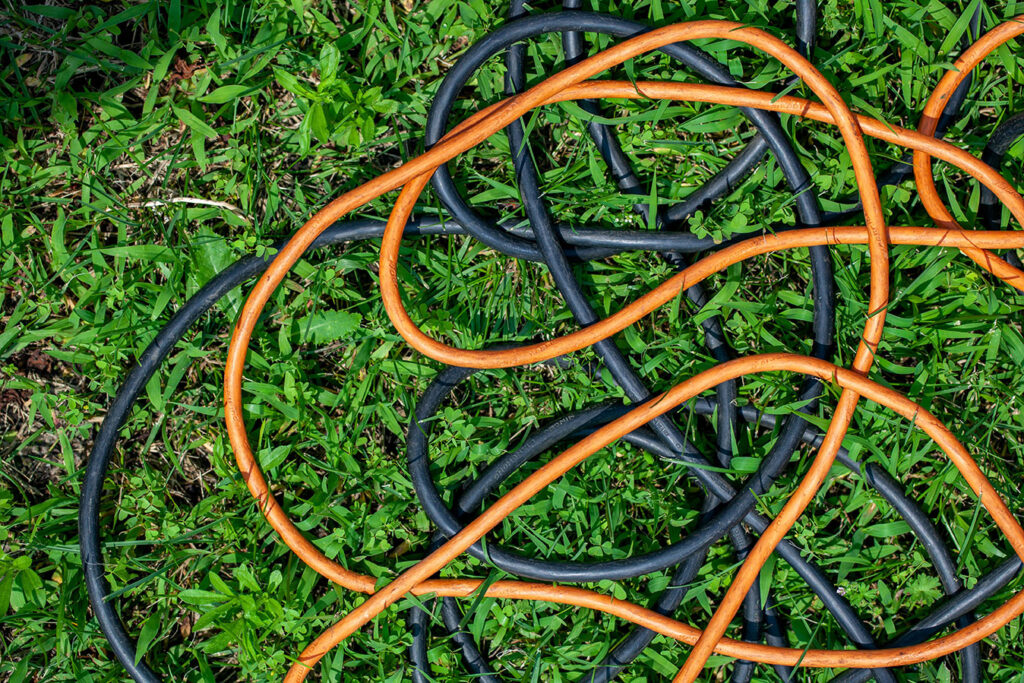When deciding how far you can run conduit and cable, keep a few things in mind. The power supply and the communication signal should be considered. Resistance, electrical noise, and the output signal limit the length of your cable runs.
At Automation Products Group, Inc. (APG), we’ve consulted with our team of experts and put together this handy guide on cable length.
Power Supply and Voltage Drop
When deciding how far to run a wire, it’s key to know where the power supply is and how much power it’s providing. Too far and there won’t be enough power left to power up your sensor.
The first consideration is how much power is used to power a sensor. Most of our sensors are powered between 12 and 24 VDC. Using 12 VDC will result in a shorter cable run than using 24 VDC because of the voltage drop experienced in the cable. The longer the cable, the more the voltage drops. As a rule of thumb, make sure to use at least 24 AWG wire.
To determine the voltage needed to power through the resistance in the line, multiply the voltage and output current. Most manufacturers have already done it and provide specs to keep their customers on the right path. In many cases, this distance will be between 25 and 100 feet, though some can reach a few thousand feet.
Signal Loss and Voltage Output
Just as the power supply drops or weakens over distance, so too will the output signal. What type of output is the sensor using? A sensor with a 0-5 VDC voltage output won’t travel as far as Modbus RS-485 or 4-20 mA outputs. It’s important to know how far a given output signal can travel.
The amount of signal loss is determined by the characteristics of the conductor; in this case, the cable. The two determining factors are the cable’s length and gauge. We recommend an appropriate gauge, one at least 24 AWG.
Since every conductor has at least a little resistance, voltage drop will happen. A shorter cable length will equal a smaller voltage drop. Likewise, a longer cable will have a greater voltage drop. This can alter the signal coming from the sensor and give a false reading or create a loss of signal.
When dealing with voltage outputs, try to keep the cable to 25 feet and no longer than 100 feet. This distance is determined by the voltage output. A higher voltage can travel farther than a lower voltage. A voltage output is also prone to electrical noise. This affects the length in noisy environments. Use shielded cable and ground your sensor properly.
4-20mA Output
4-20mA outputs are less susceptible to voltage drop, but it still becomes a problem if the voltage supply isn’t high enough. Most of our sensors work on 12-24 VDC. Drop below 12 VDC and there won’t be enough power to drive a signal through the wire.
Unlike voltage outputs, 4-20mA outputs can travel long distances, some up to 2000 feet. Going father than 2000 feet can result in power loss due to higher resistance in a long wire. Once it drops below the requisite 12 VDC, the signal drops off as well.
Digital Outputs
Modbus RS-485 and other digital outputs aren’t susceptible to the same issues as voltage outputs or 4-20mA outputs. They can travel long distances because of the nature of the signal. Similar to 4-20mA, they aren’t susceptible to voltage drop as long as the power supply is adequate. They follow a different set of rules than analog outputs.
The industry standard for digital outputs limits the distance to 4000 feet. RS-485 travels over 2 wires in a balanced signal: the signal on one wire is the opposite of the signal on the second wire. If one wire transmits a high, the other wire transmits a low and vice versa. This balance means RS-485 has good noise rejection, enabling it to travel long distances.
Key Factors
To review, the critical factors are the signal type, the power supply, the cable gauge (resistance), and electrical noise. These work together to determine how long to run a cable.
Still have questions? We’re happy to help! Let’s talk about your application needs and how to get the most out of your wiring scheme.
WRITTEN BY

Sami T.
Sami Thompson is APG’s Marketing Technical Writer and has been with the company since 2022. With a master’s degree in English from Utah State University and a 40-page thesis publication under her belt, Sami has a demonstrated strong writing background. In her free time, Sami enjoys reading and birdwatching.


